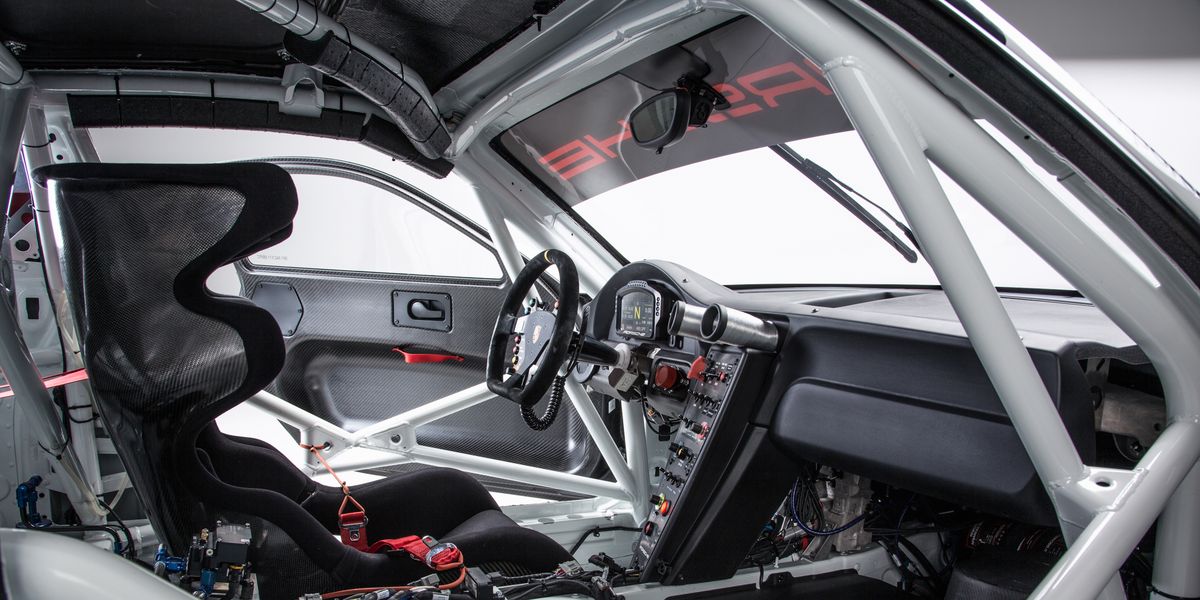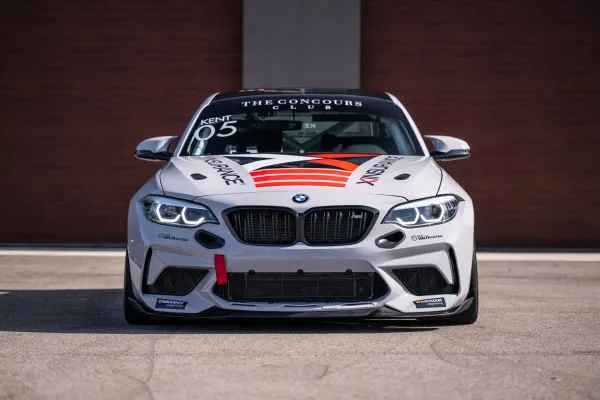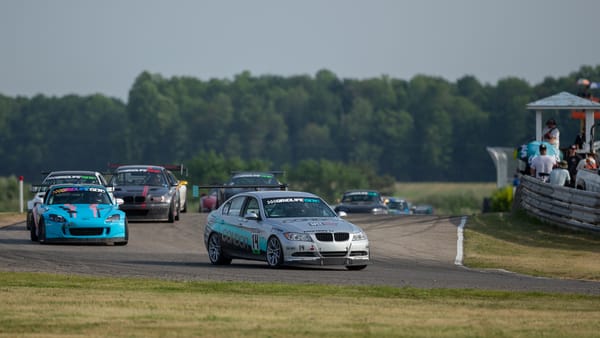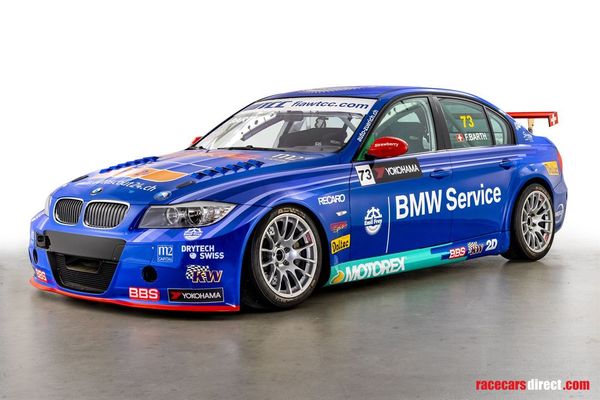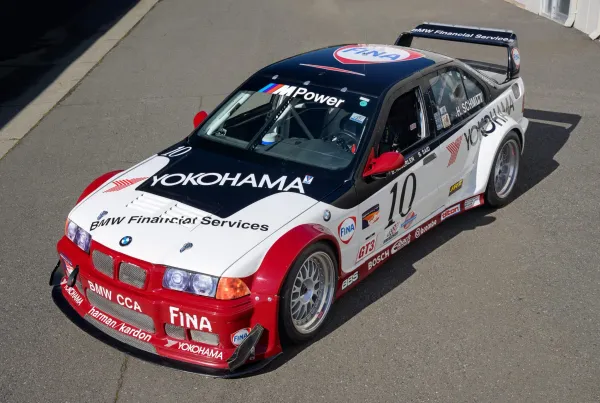I love nerding out about roll cage design. Door bars in particular. There is something almost voyeuristic about seeing part of a roll cage through an open door.
While a roll cage alludes to protection in a rollover, in wheel to wheel competition you are more likely to get hit on the side than you are to flip the car. Thus, anti-intrusion door bars are a critical part of a roll cage design.
Today we are going to talk about what I consider to be the 3 most common door bar designs, at least the ones that are going to pass tech with most road racing sanctioning bodies. We'll get into the pros and cons of each option.
Straight X
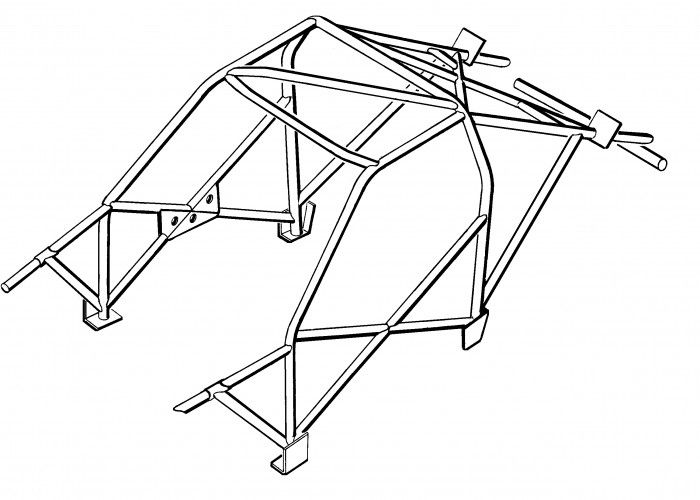
Most sanctioning bodies require a minimum of two bars for anti-intrusion, at least on the driver's side. The simplest design is going to be the Straight X, which is one solid bar going from the main hoop to the A-pillar bar, and another bisecting bar going from the A-pillar bar to the main hoop, welded together in the middle.
Optional features of this design would be a rocker/sill bar, and "taco" gussets where the two bars intersect in the middle.
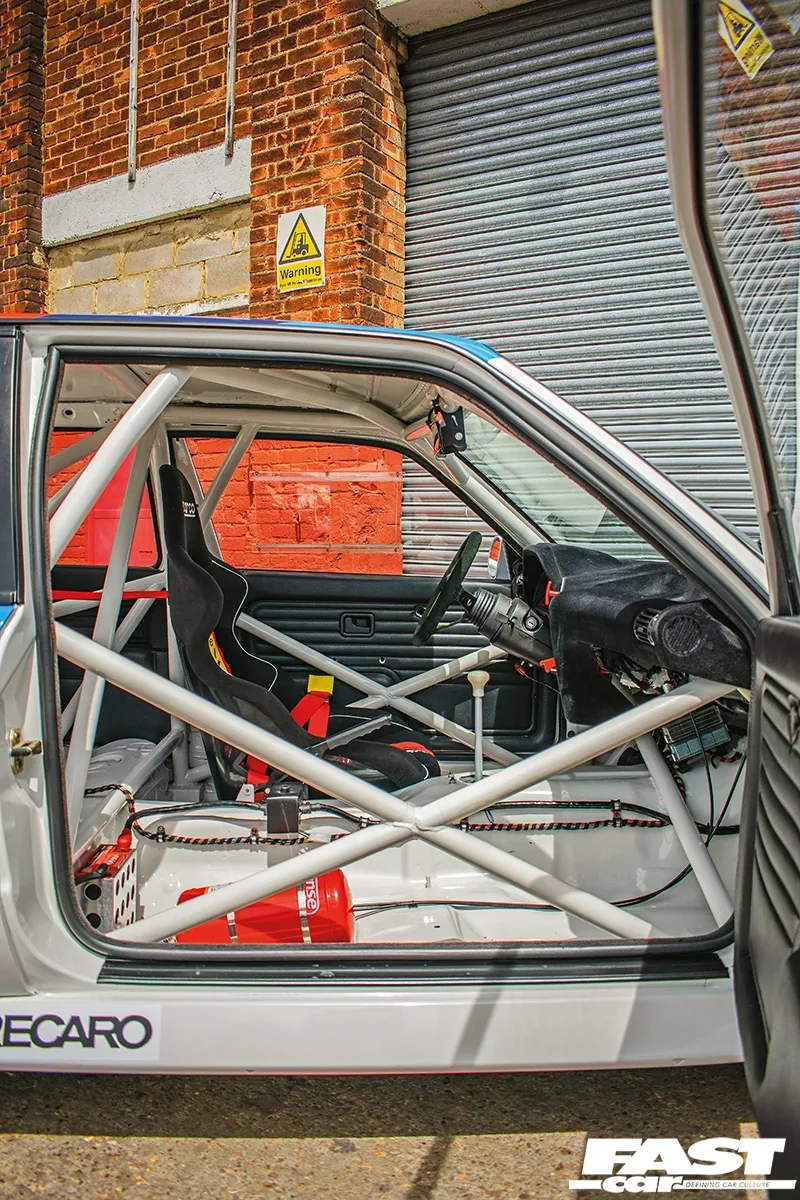
The Straight X design is simple and effective. The door bars are in tension between the main hoop and A-pillar bar, thus making them very strong. The tension pulling between those main components of the cage make it very hard for the door bar to bend or fold inwards, thus protecting the driver.
A potential downside to the Straight X design is lack of cabin space. Since the bars aren't kicked out into the doors, it can make for a crowded cabin.
For this reason I used to look down upon Straight X door bars, thinking them to be a corner-cutting measure, but I have since realized that what really matters is whether or not space was limited to begin with. For instance, in an E30 or a Miata, a Straight X is probably going to feel cramped. However, in an E46, E90, or F80, the cabins are so large that Straight X's are often the top choice due to their strength and simplicity.
Bent X (FIA-Style)
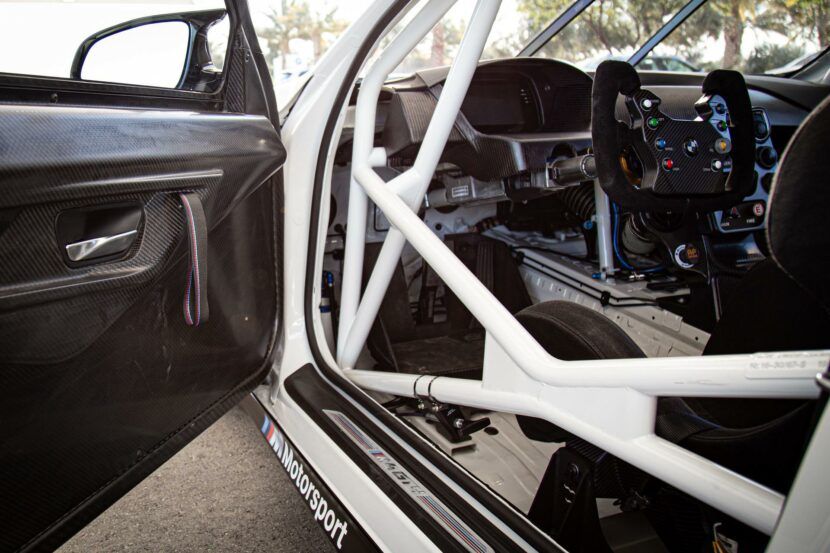
At first glance, a Bent X design might look very similar to a Straight X design, especially if gussets are used in the center, obscuring the true nature of the tubing.
The key difference in Bent X door bars, also known as FIA-Style door bars, is that the two tubes don't usually intersect each other. Instead, an upper and lower bar are each bent in a manner that allows them to adjoin one another at, or near, the center.
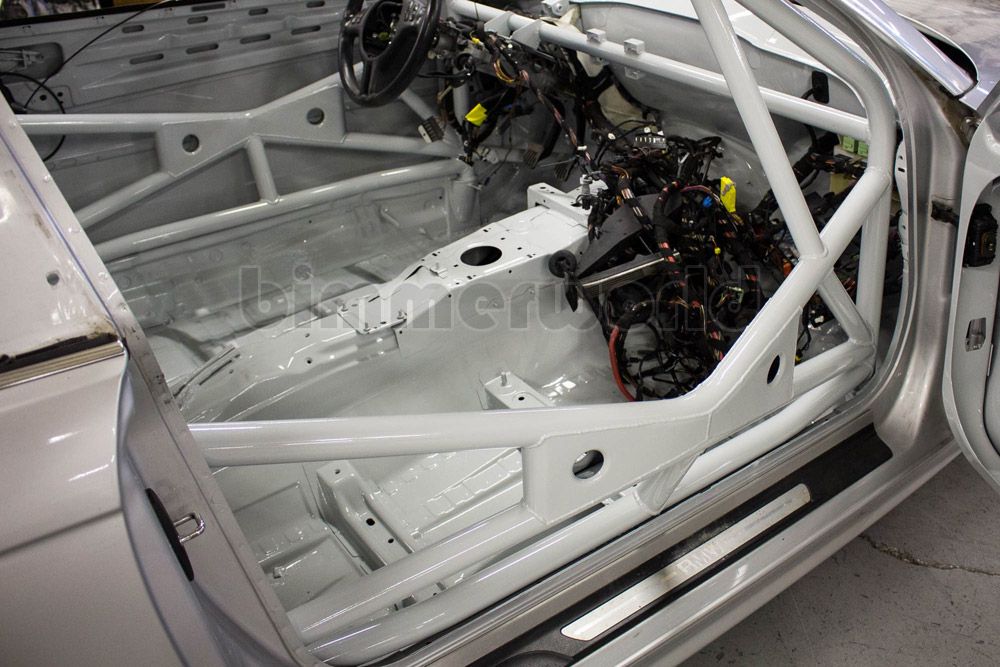
Since the bars are bent, you can angle them outwards and into the door, creating more cabin space for the driver. The downside is that the bars are now in compression, potentially allowing them to crush or fold inwards into the cabin.
Optional features of this design include rocker bars, ladder braces, taco gussets, and triangulation bars. The triangulation bars typically adjoin the main Bent X bars somewhere near the middle in order to brace them against folding inwards.
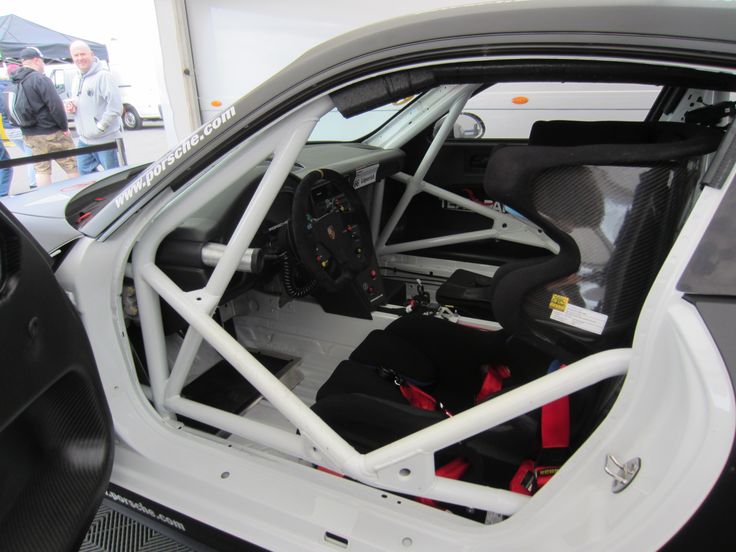
Variations of a Bent X are probably the most commonly used design for new cages these days, and they are what you will commonly find in factory homologated cars such as the BMW M4 GT4. Porsche also uses a Bent X variation where one bar intersects the other, in the Porsche GT3-R and Carrera Cup cars (see photo above).
NASCAR-Style
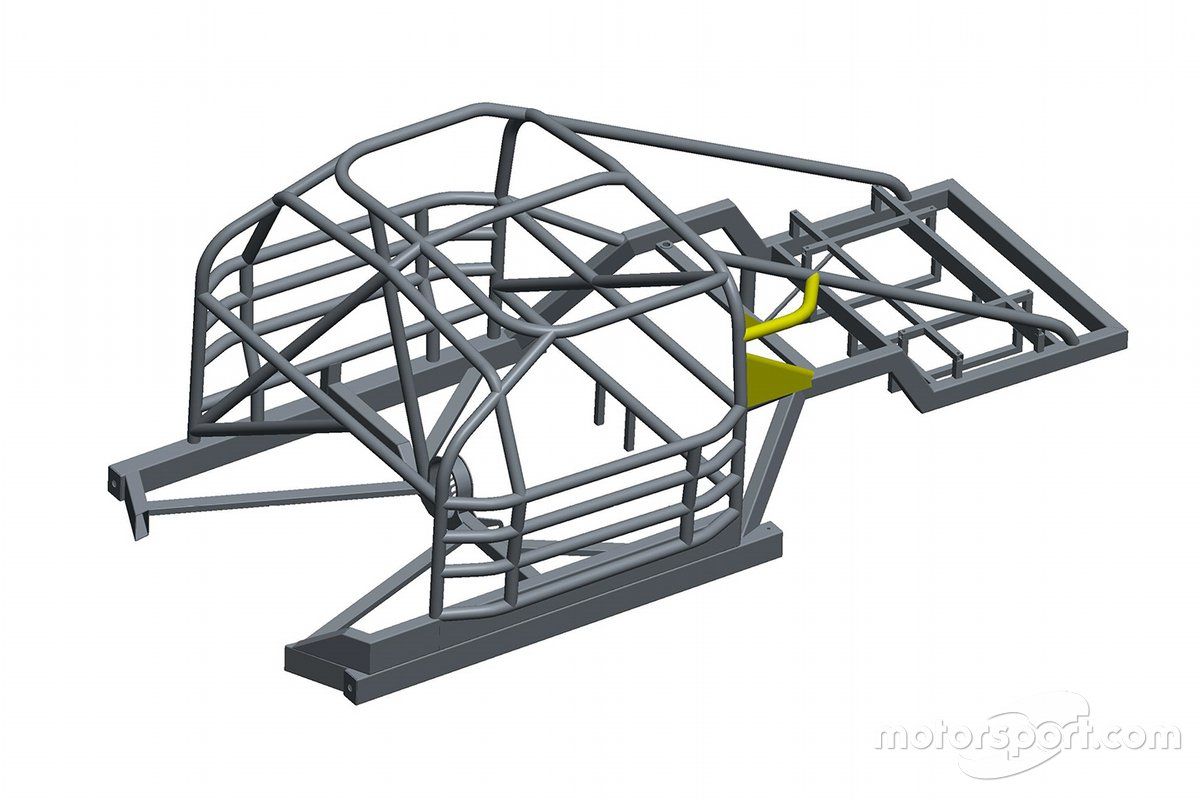
Ladder style door bars, commonly called NASCAR-style, feature 2-4 parallel horizontal bars adjoined by vertical "ladder" bars. They are usually kicked out into the door quite a bit, creating a large cabin space and a lot of safety margin around the driver.
They are called NASCAR bars because, naturally, this has been the design for the last few generations of NASCAR roll cages.
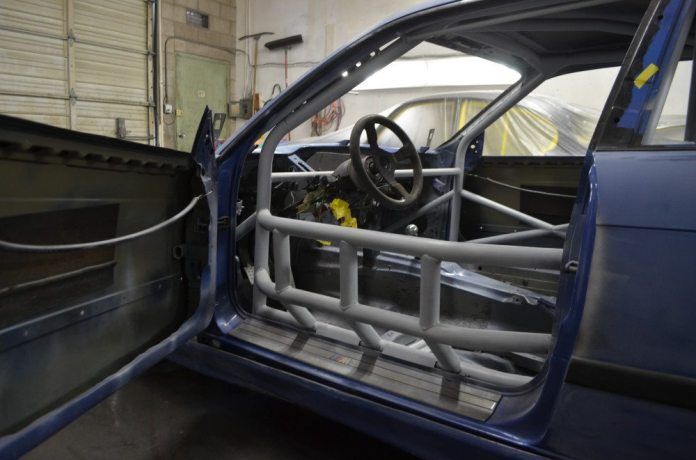
I used to think these were 100% the way to go when building a roll cage. The thing is, they are almost always built incorrectly in production-based sports cars.
You see, NASCARs are built from the ground up as custom tube-frame chassis, with no production-car bodywork or restrictions to deal with, namely the B-pillar, door design, and sometimes the A-pillar.
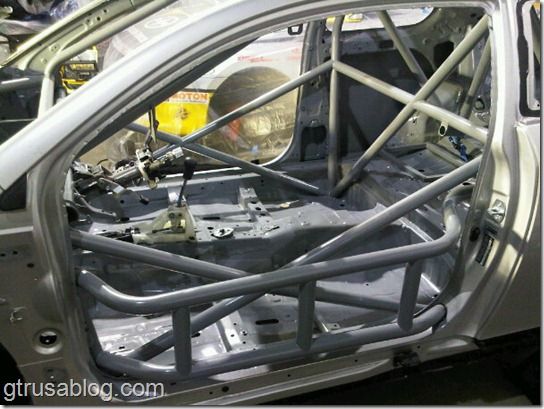
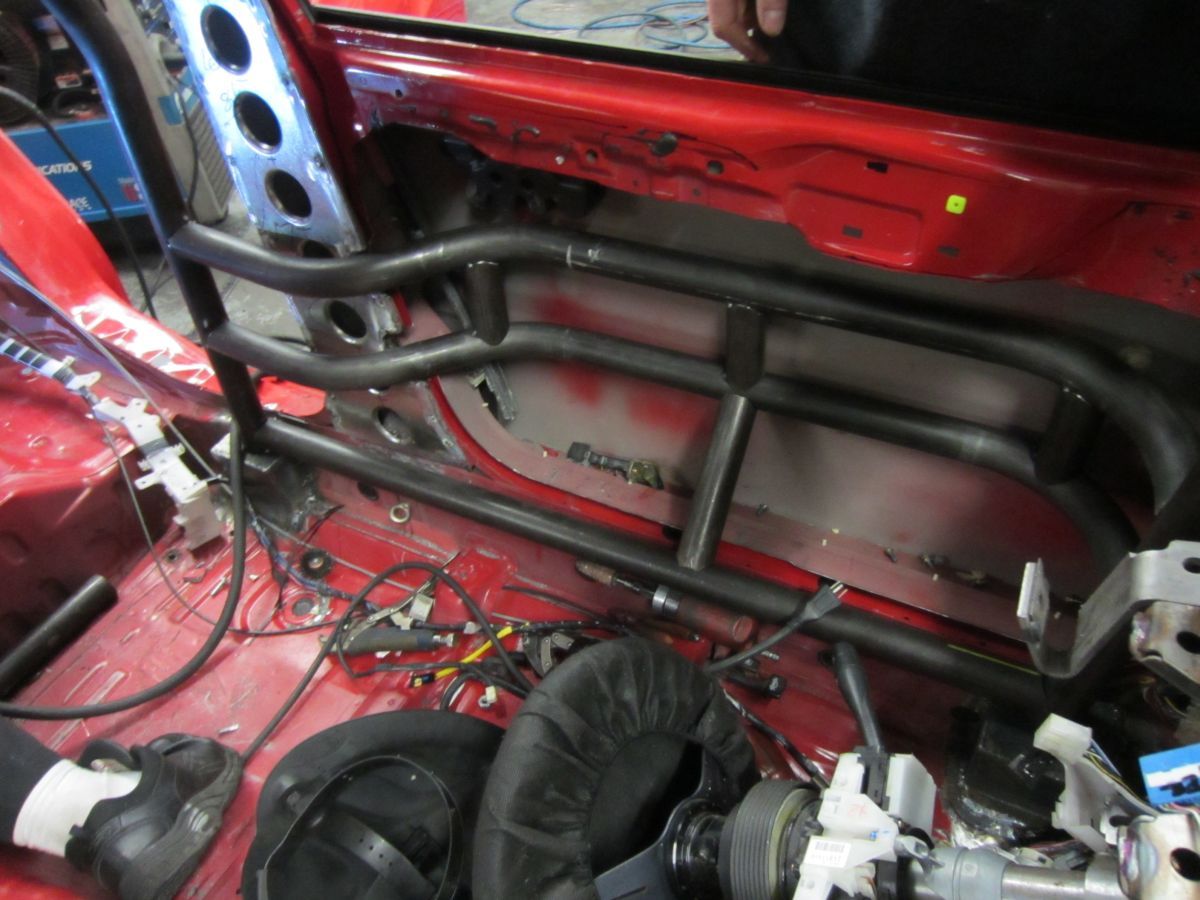
How NOT to do NASCAR bars (with S-bends). Images courtesy: gtrusablog.com and roadraceengineering.com
In practice, when building these into a production unibody chassis, extreme compromises have to be made that end up sacrificing the strength of the design. So called "S" bends are used to snake the bars around the B-pillar, and then out into the door. These S-bends are potential failure points, allowing the door bar to collapse inwards and into the driver's space, since the bars are no longer in compression.
I could have sworn that the NASA CCR and SCCA GCR specifically disallowed these S-bends, but I cannot find any wording about it. It may have been the FIA.
The majority of NASCAR-style door bars I see on production sports cars have S-bends around the B-pillar, and some of them have them around the A-pillar as well. Bleh.
Bonus: Front Hoop Support Bars
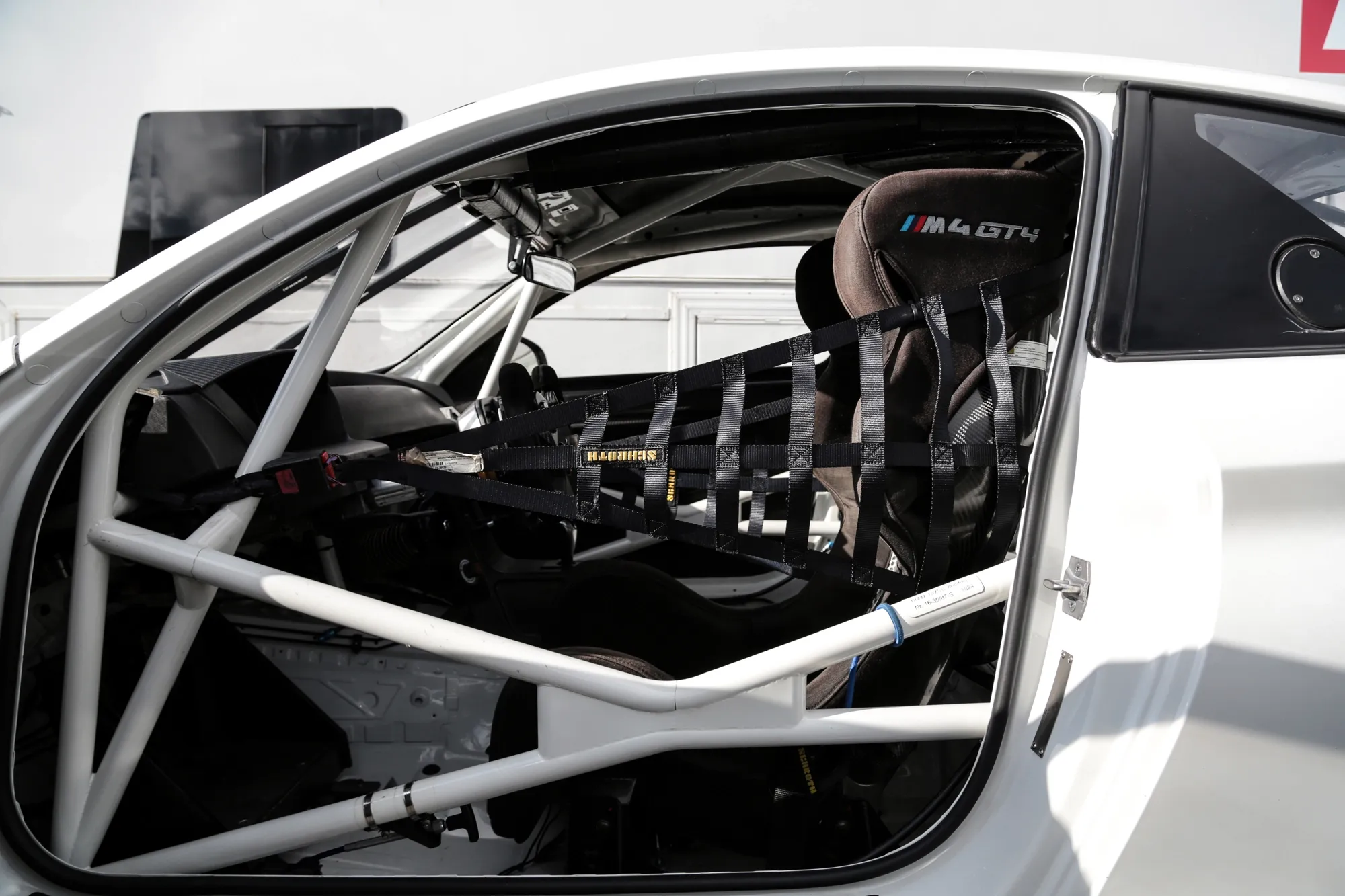
It is becoming more common to see front hoop support bars. These don't serve an anti-intrusion purpose in the same manner as the door bars themselves, but they are often intertwined with the door bars. These bars are to support the front A-pillar bars in the case of rollover, providing a load path to ensure that the front hoop tubes don't collapse.
There are two spots this is commonly done: from the foot of the A-pillar, intersecting near the bend where the A-pillar curves downwards, and triangulated from the main hoop. You can see both of these in the example below:
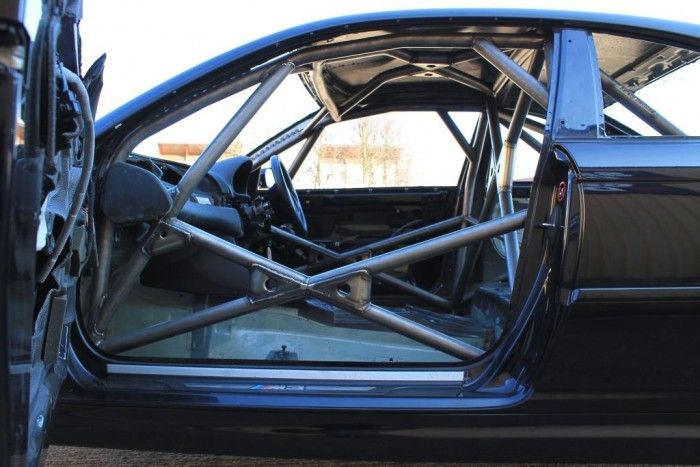
I think these are a great and often overlooked feature of a roll cage. They add significant strength to the front hoop at minimal weight cost, and if done right, they don't affect ingress or egress from the car.
Due to the constraints of a production chassis, compromises are inevitable. There is no hard-and-fast rule when it comes to door bar design. The cage design needs to be viewed holistically by the builder and the owner of the car. You are your own best advocate when having a cage built for your car.


